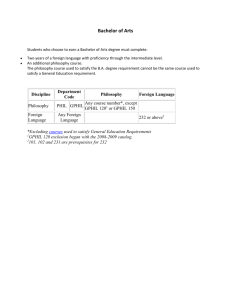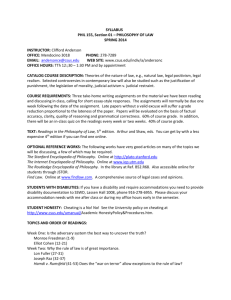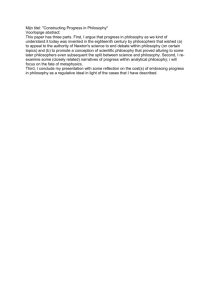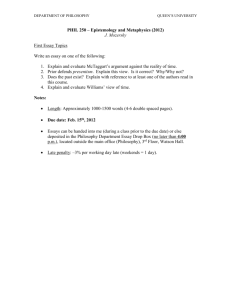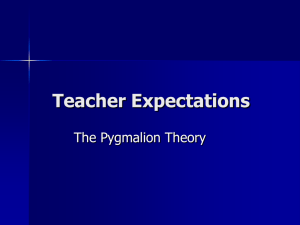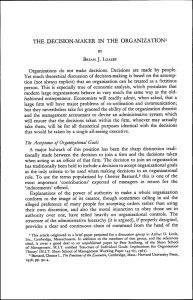Philosophy of Human Resources
advertisement
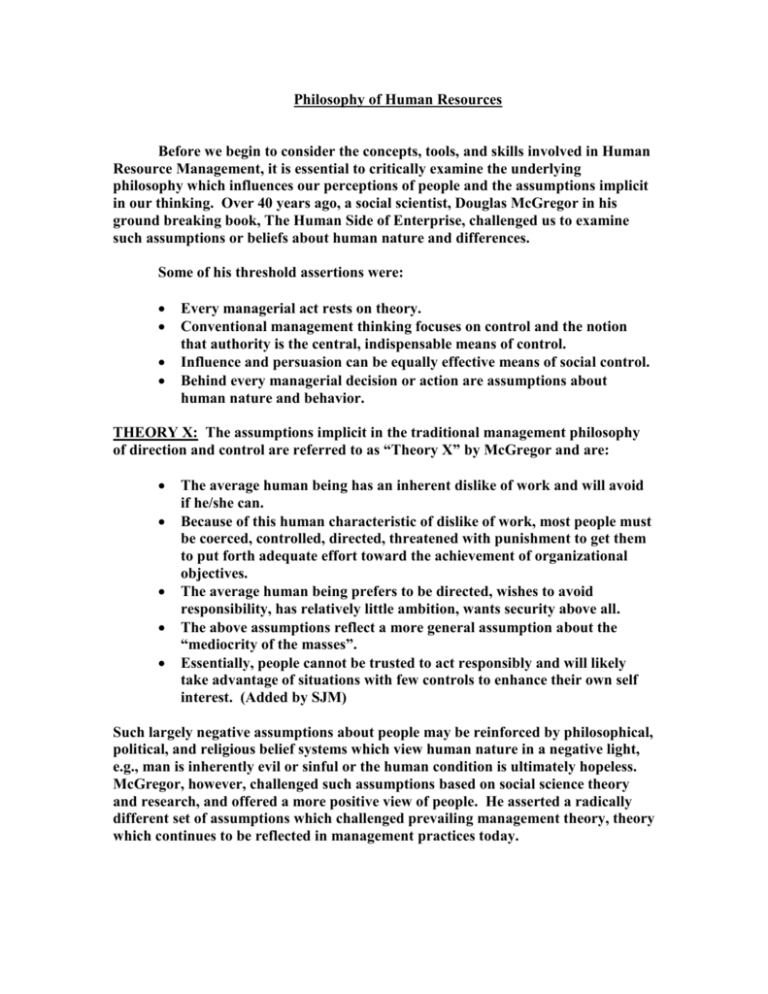
Philosophy of Human Resources Before we begin to consider the concepts, tools, and skills involved in Human Resource Management, it is essential to critically examine the underlying philosophy which influences our perceptions of people and the assumptions implicit in our thinking. Over 40 years ago, a social scientist, Douglas McGregor in his ground breaking book, The Human Side of Enterprise, challenged us to examine such assumptions or beliefs about human nature and differences. Some of his threshold assertions were: Every managerial act rests on theory. Conventional management thinking focuses on control and the notion that authority is the central, indispensable means of control. Influence and persuasion can be equally effective means of social control. Behind every managerial decision or action are assumptions about human nature and behavior. THEORY X: The assumptions implicit in the traditional management philosophy of direction and control are referred to as “Theory X” by McGregor and are: The average human being has an inherent dislike of work and will avoid if he/she can. Because of this human characteristic of dislike of work, most people must be coerced, controlled, directed, threatened with punishment to get them to put forth adequate effort toward the achievement of organizational objectives. The average human being prefers to be directed, wishes to avoid responsibility, has relatively little ambition, wants security above all. The above assumptions reflect a more general assumption about the “mediocrity of the masses”. Essentially, people cannot be trusted to act responsibly and will likely take advantage of situations with few controls to enhance their own self interest. (Added by SJM) Such largely negative assumptions about people may be reinforced by philosophical, political, and religious belief systems which view human nature in a negative light, e.g., man is inherently evil or sinful or the human condition is ultimately hopeless. McGregor, however, challenged such assumptions based on social science theory and research, and offered a more positive view of people. He asserted a radically different set of assumptions which challenged prevailing management theory, theory which continues to be reflected in management practices today. THEORY Y: The assumptions implicit in the modern management theory of influence, empowerment, team performance, and high performance organizations are referred to as “Theory Y” by McGregor and are: The expenditure of physical and mental effort is as natural as play or rest. External control and the threat of punishment are not the only means for bringing about effort toward organizational objectives. Man will exercise self-direction and self-control in the service of objectives to which they are committed. Commitment to objectives is a function of the rewards associated with their achievement. The average human being learns, under proper conditions, not only to accept but to seek responsibility. The capacity to exercise a relatively high degree of imagination, ingenuity, and creativity in the solution of organization problems is widely, not narrowly, distributed in the population. Under the conditions of modern industrial life, the intellectual potentialities of the average human being are only partially utilized. Essentially, most people can be trusted to act responsibly and ethically in balancing personal interests with those of an organization. These Theory Y assumptions involve sharply different implications for managerial strategy than do those of Theory X. They are dynamic rather than static: they indicate the possibility of human growth and development; they stress the necessity of selective adaptation (and the use of influence and persuasion) rather than a single absolute form of control; they are framed in terms of a human resource which has substantial potentialities rather than one which is unworthy of trust and confidence. Theory Y emphasizes “integration”, i.e., the creation of conditions such that the members of an organization can achieve their goals BEST by directing their efforts toward the success of the enterprise. PYGMALION EFFECT: The concept of self-fulfilling prophecy or “Pygmalion Effect” is useful in understanding the power of such assumptions in influencing the selection of managerial methods and tools, and the effect they have on human behavior. Theory X assumptions that people are inherently lazy and avoid responsibility often lead managers to use methods of tight control and coercion, and if people don’t comply with directions, the use of punishment. Such methods when used often influence people to resist their use, to comply with but not commit to organizational objectives, and to provide a level of effort adequate to protect themselves from punishment, but one that is often well under potential. Such behavior tends to confirm the underlying assumptions. And so, the cycle of assumptions > treatment > efforts is reinforced and becomes a selffulfilling prophecy. Such a Pygmalion Effect is subtle and powerful in shaping the work culture, employee attitudes, and of course, management perceptions and philosophy. Theory Y assumptions that view people in a more positive light, justified by social science research, create the same type of Pygmalion Effect, but with dramatically different results. Studies of high performance organizations clearly indicate that their management philosophy is based on Theory Y assumptions and the work culture reinforces such. Exercise: Just ask yourself to describe the “boss” for whom you have done your best work? List the characteristics of this person and the work culture they are in, and then infer from those characteristics, what the underlying assumptions about people were. Surprised to discover mostly Theory Y assumptions? Most people tend to assume that they need to be Theory X managers to be effective and to “maintain control” or else their employees will take advantage of them……BUT most people also prefer to work in a Theory Y culture for a Theory Y manager. Why do you suppose? What type of manager do you want to be? Challenge: How can an organization change from a Theory X to Theory Y management philosophy and style? It generally takes a comprehensive organizational assessment and a long-term intervention to openly address the patterns of behavior in each phase of the self-fulfilling prophesy cycle: assumptions > treatment > efforts. It entails realigning the entire HRM system to support such change, and often rethinking the business strategy of the firm itself. In promoting work culture change, consider the 7 characteristics of high performance organizations (Pfeffer, 1998): (1) openness of information; (2) reduction of status differences; (3) employment security; (4) selective hiring; (5) extensive training; (6) team management; and (7) performance based compensation. Perception Checking: This skill is useful in inviting another person to disclose their feelings and assumptions to you. When someone acts in a certain manner, simple state your perception of what may be motivating their behavior as accurately as possible and ask if it is accurate. For example, if someone hesitates to give you a certain task to perform, you could state: “I sense that you may be uncomfortable in having me perform that task; is that correct?” If you have a reasonably authentic relationship with them, they may respond: “No, it’s just not a priority right now.” Or “Yes, I am concerned that you may become consumed by it and take effort away from the primary task.” Clearly, this skill entails some social risk taking. If the response is less honest, then that’s a clear sign that some relationship building is needed.


